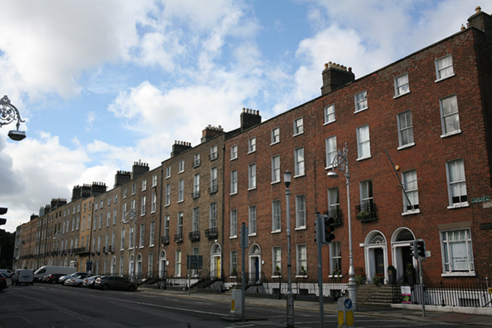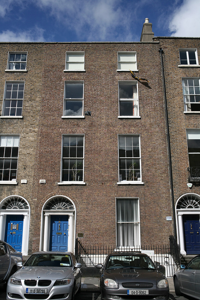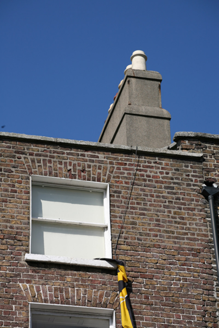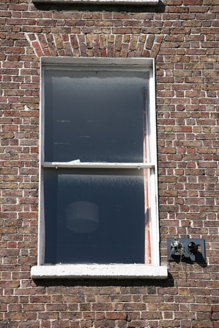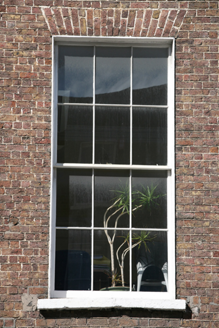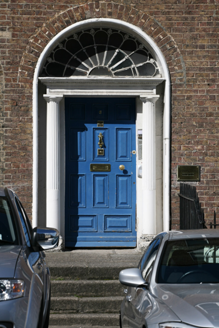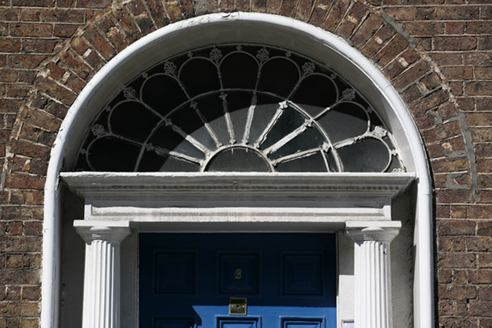Survey Data
Reg No
50930063
Rating
Regional
Categories of Special Interest
Architectural, Artistic
Original Use
House
In Use As
Office
Date
1810 - 1830
Coordinates
316639, 233199
Date Recorded
09/09/2015
Date Updated
--/--/--
Description
Terraced two-bay four-storey over basement former townhouse, built c. 1820, with full-height rear return to rear (west). Now in use as offices. M-profile pitched slate roof, L-plan hipped roof to rear return, set behind parapet wall with granite coping, plastic hopper and downpipe breaking through to north. Shouldered rendered chimneystack with lipped clay pots to north. Buff brick walls laid in Flemish bond with wigged pointing. Moulded granite plinth course over tooled limestone ashlar basement wall. Cement rendered walls to rear elevation and return. Gauged brick square-headed window openings, single round-headed opening to rear return, with painted granite sills, patent reveals and timber sash windows; one-over-one to third, second and ground floors, replacement six-over-six pane to first floor and uPVC fixed-pane window to basement. Original multi-pane timber sash windows to rear elevation. Gauged brick round-headed door opening with painted masonry Doric doorcase comprising square-headed door opening flanked by half-fluted Doric columns supporting panelled lintel entablature and original decorative fanlight. Original timber door with eleven raised-and-fielded panels and brass door furniture opening onto shared granite platform and granite steps. Platform and basement enclosed by original wrought- and cast-iron railings set on granite plinth wall with steel steps providing access to basement, flush recent door beneath platform. Forming part of a continuous terrace of former townhouses lining the west side of Fitzwilliam Street Upper.
Appraisal
A handsome terraced early-nineteenth century former townhouse retaining its original façade composition and much original external fabric, including some sash windows and well-executed ironwork. The granite dressings contrast with the mellow brick, adding colour and textural interest, while the fine Doric doorcase and fanlight forms the decorative focus. It forms part of a long terrace of former residences and contributes significantly to the coherent appearance of the streetscape in the heart of the south Georgian core.
